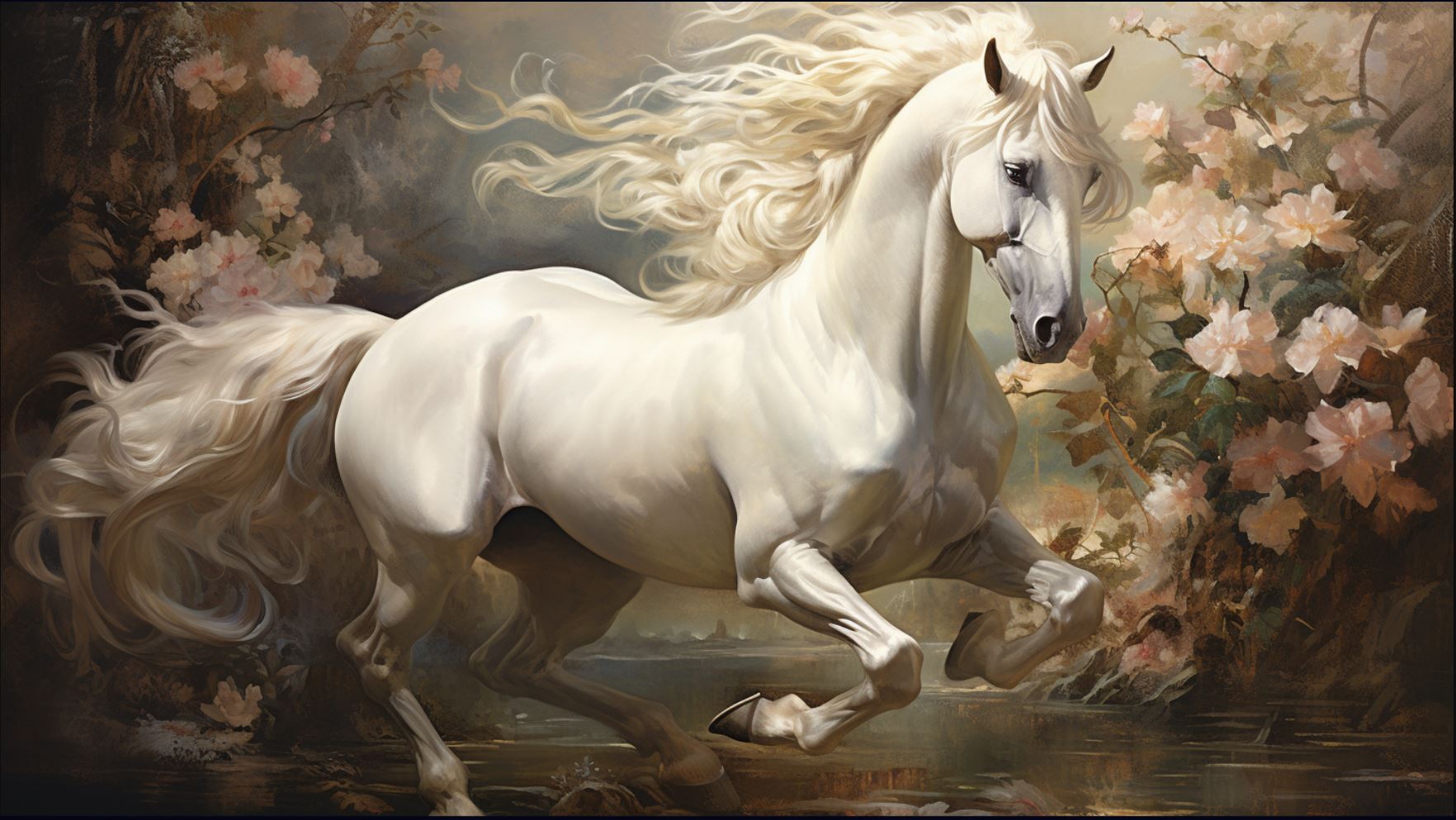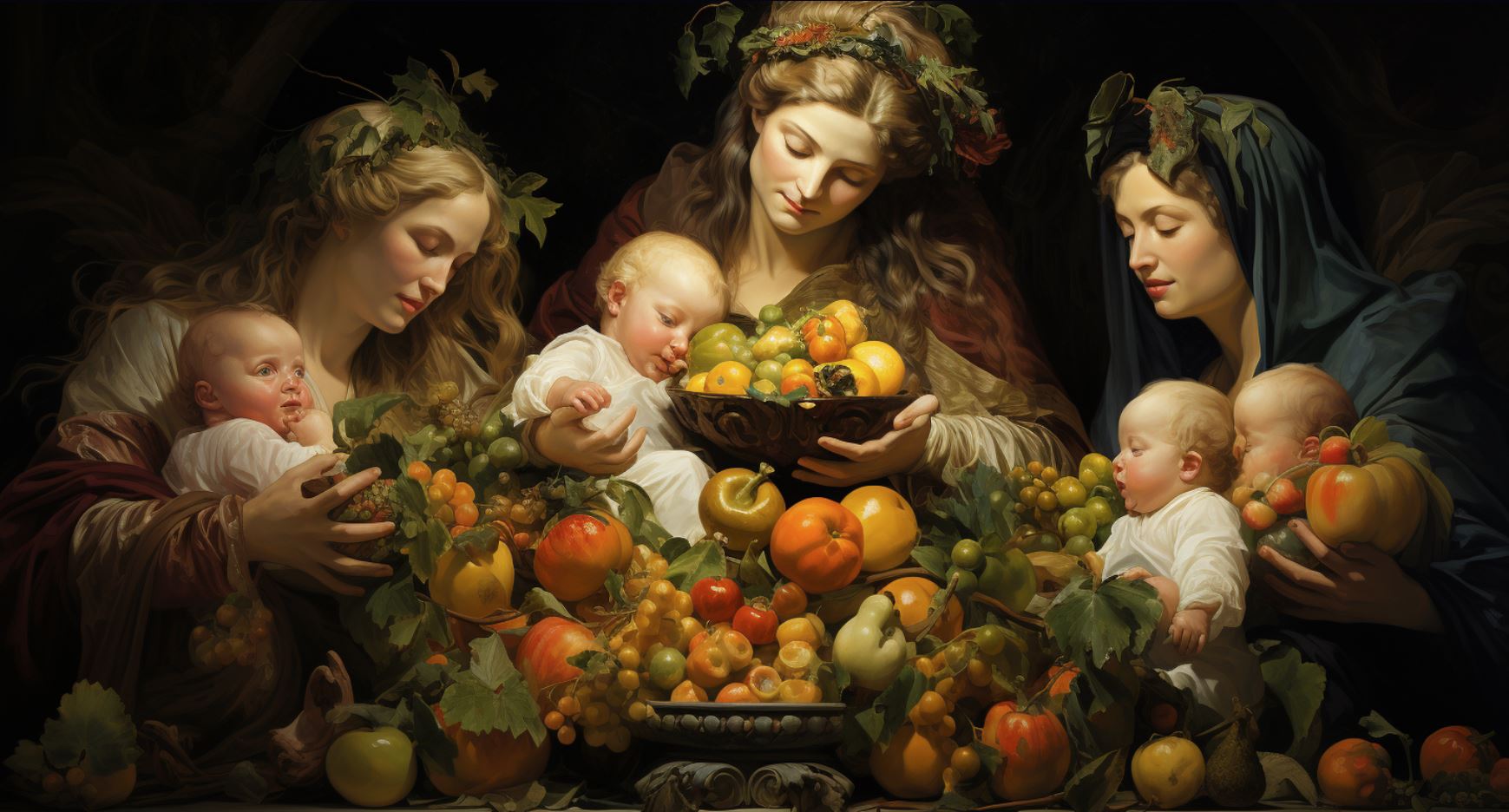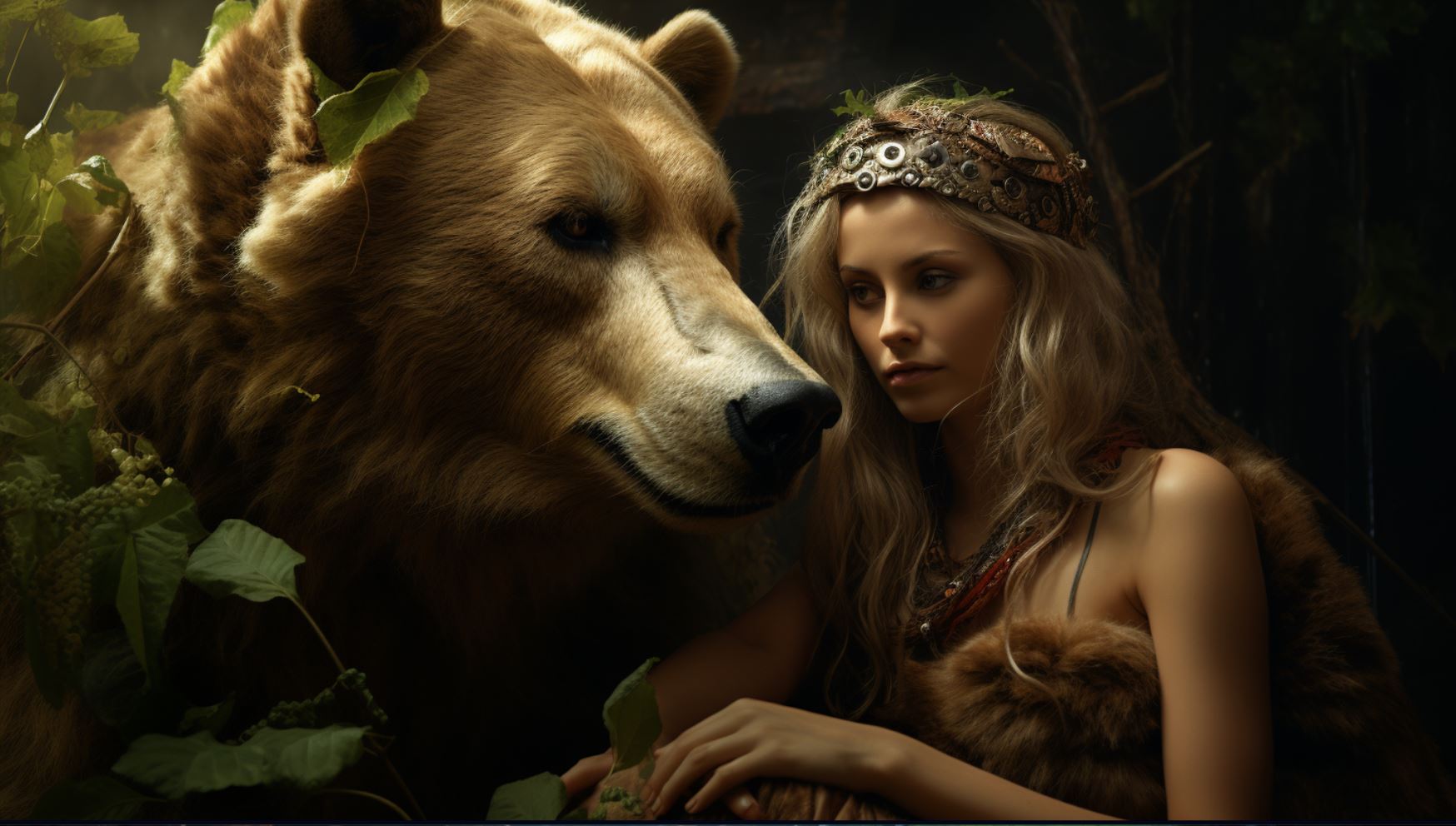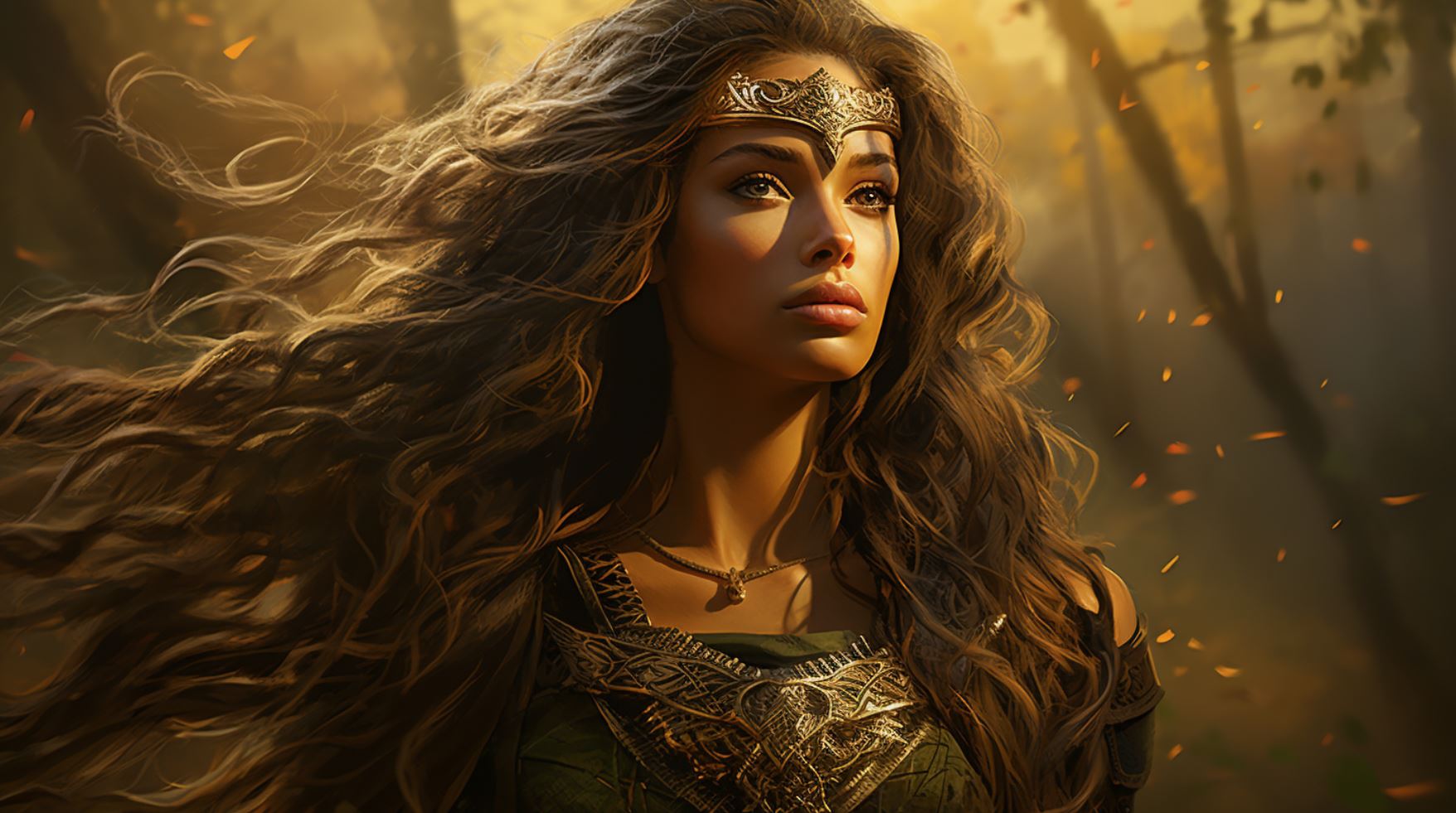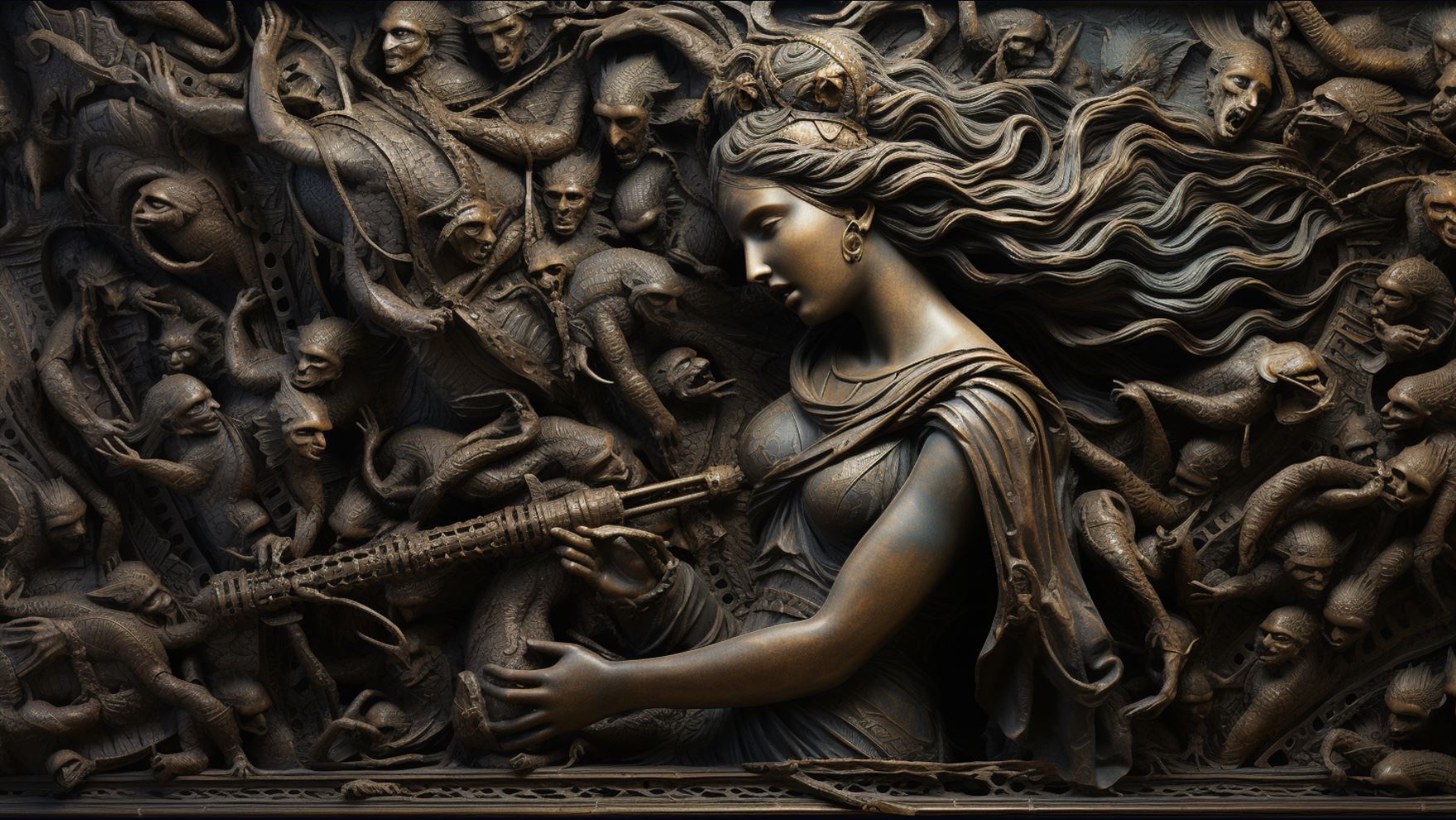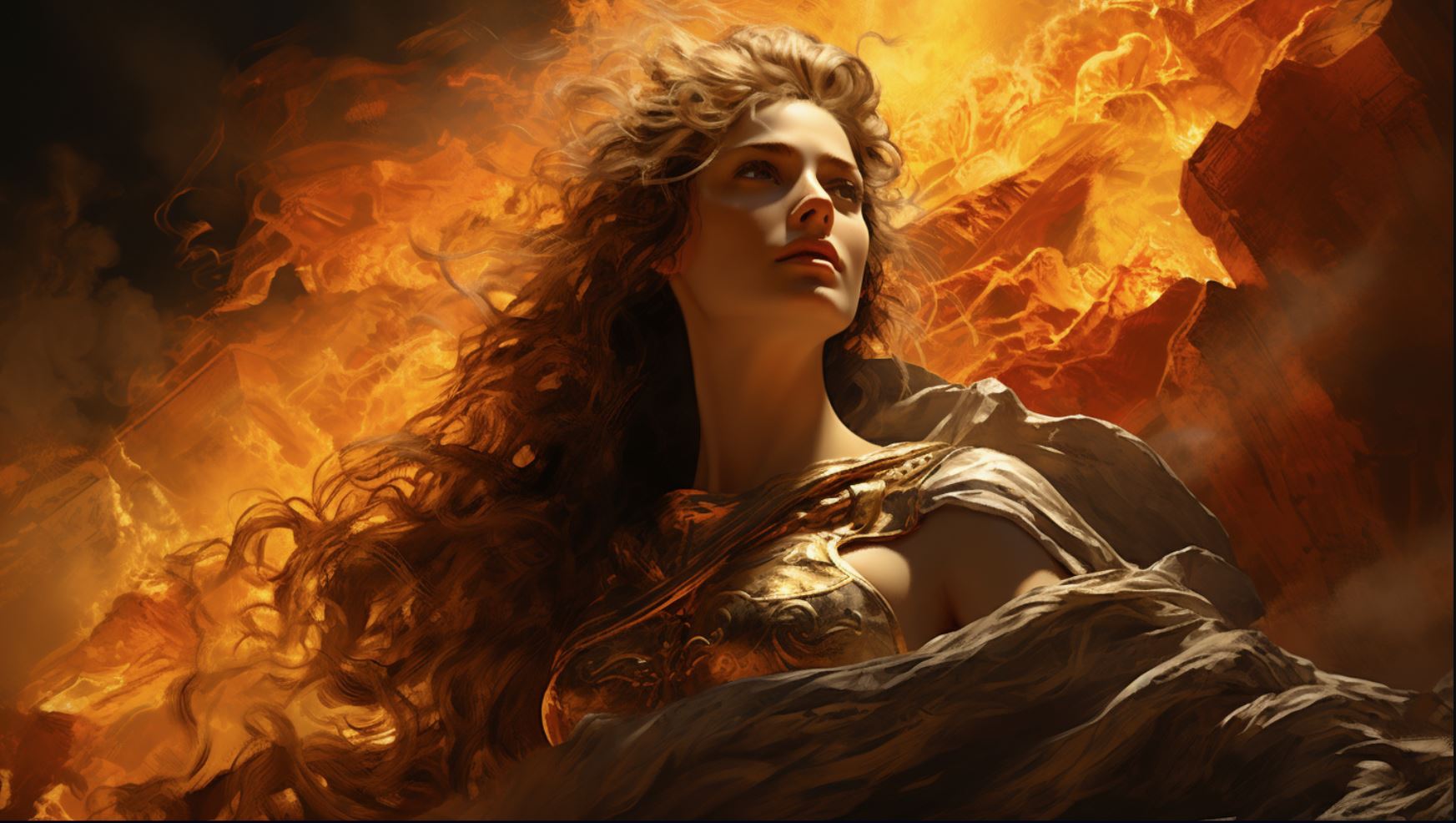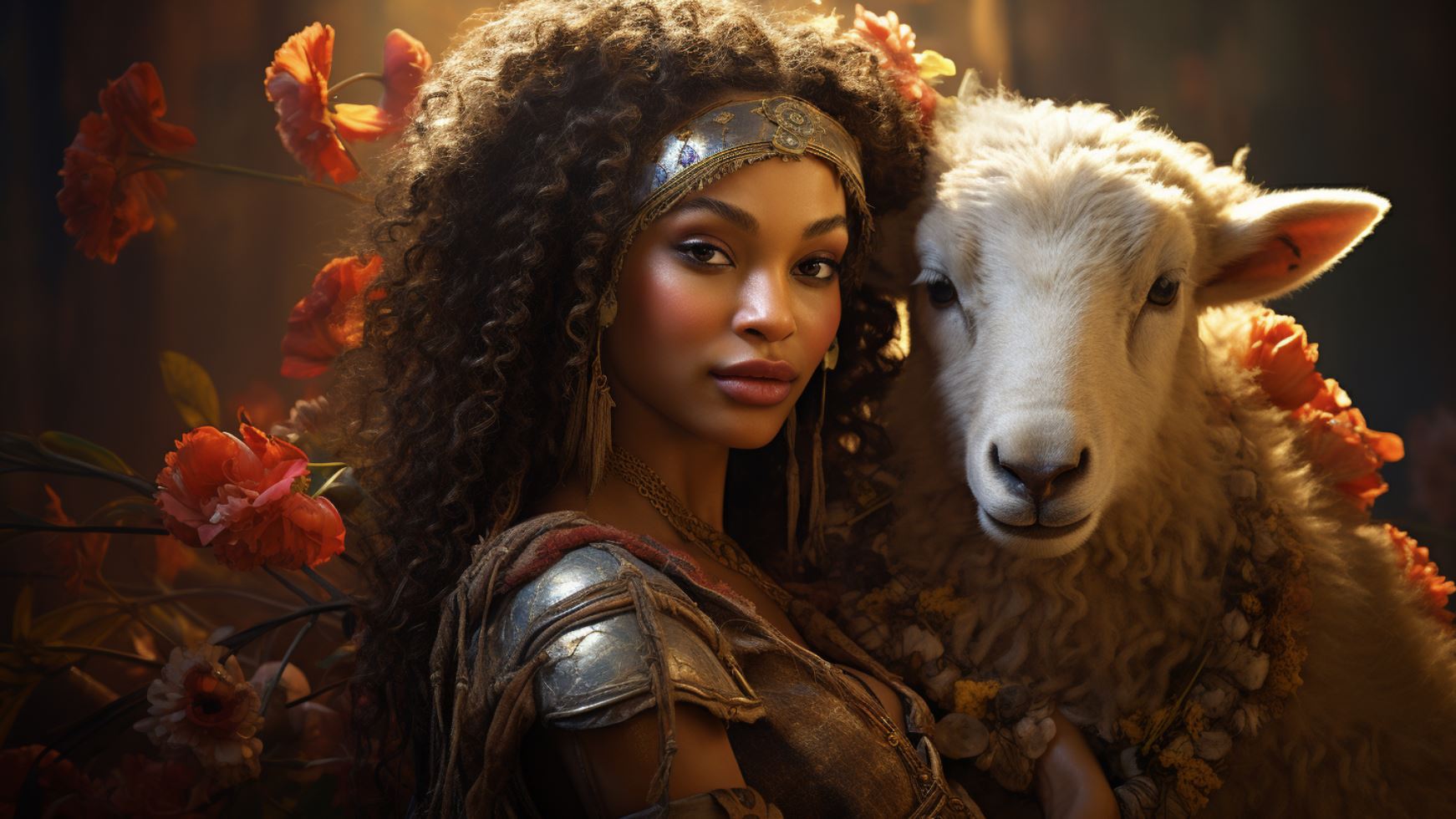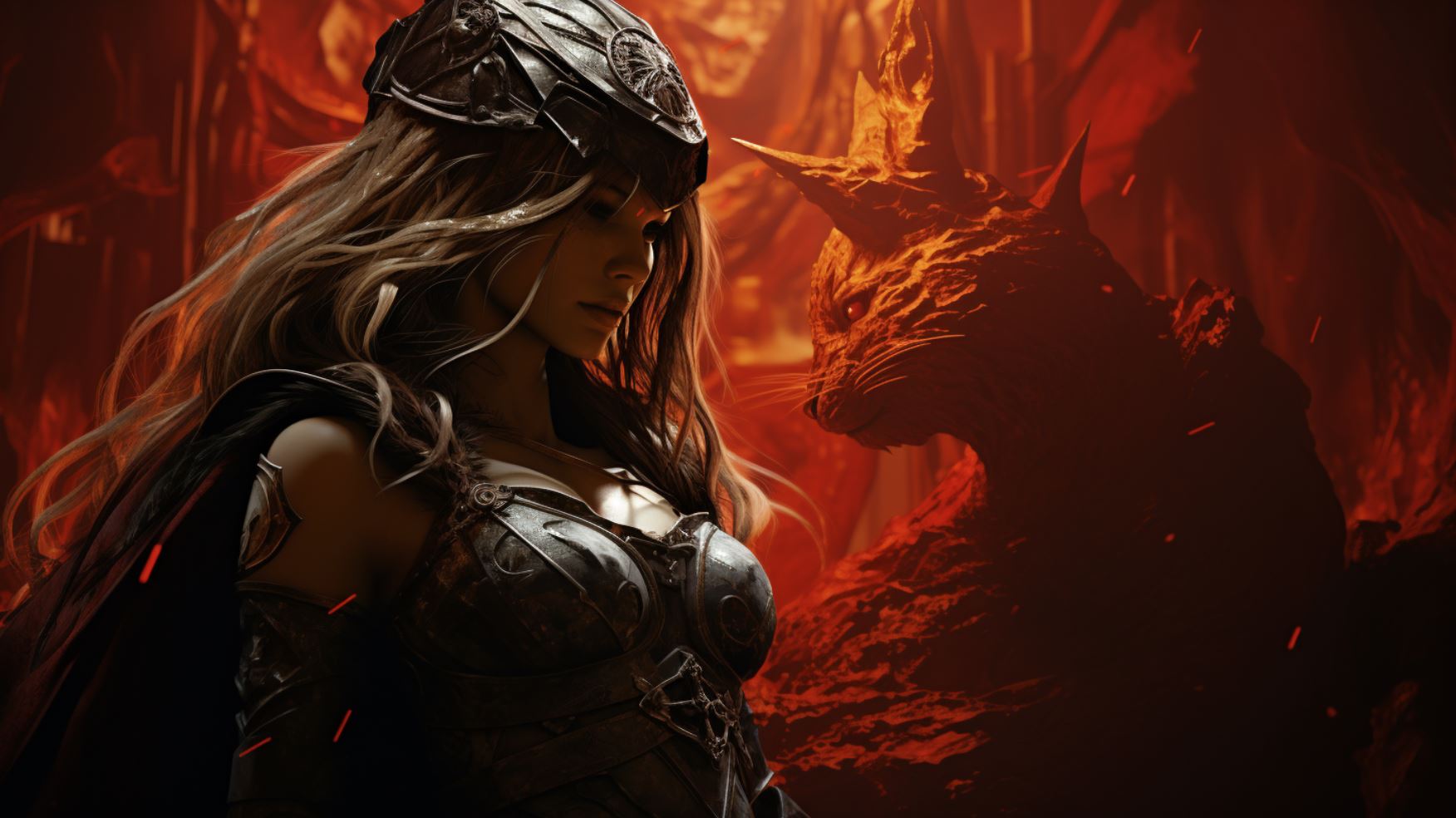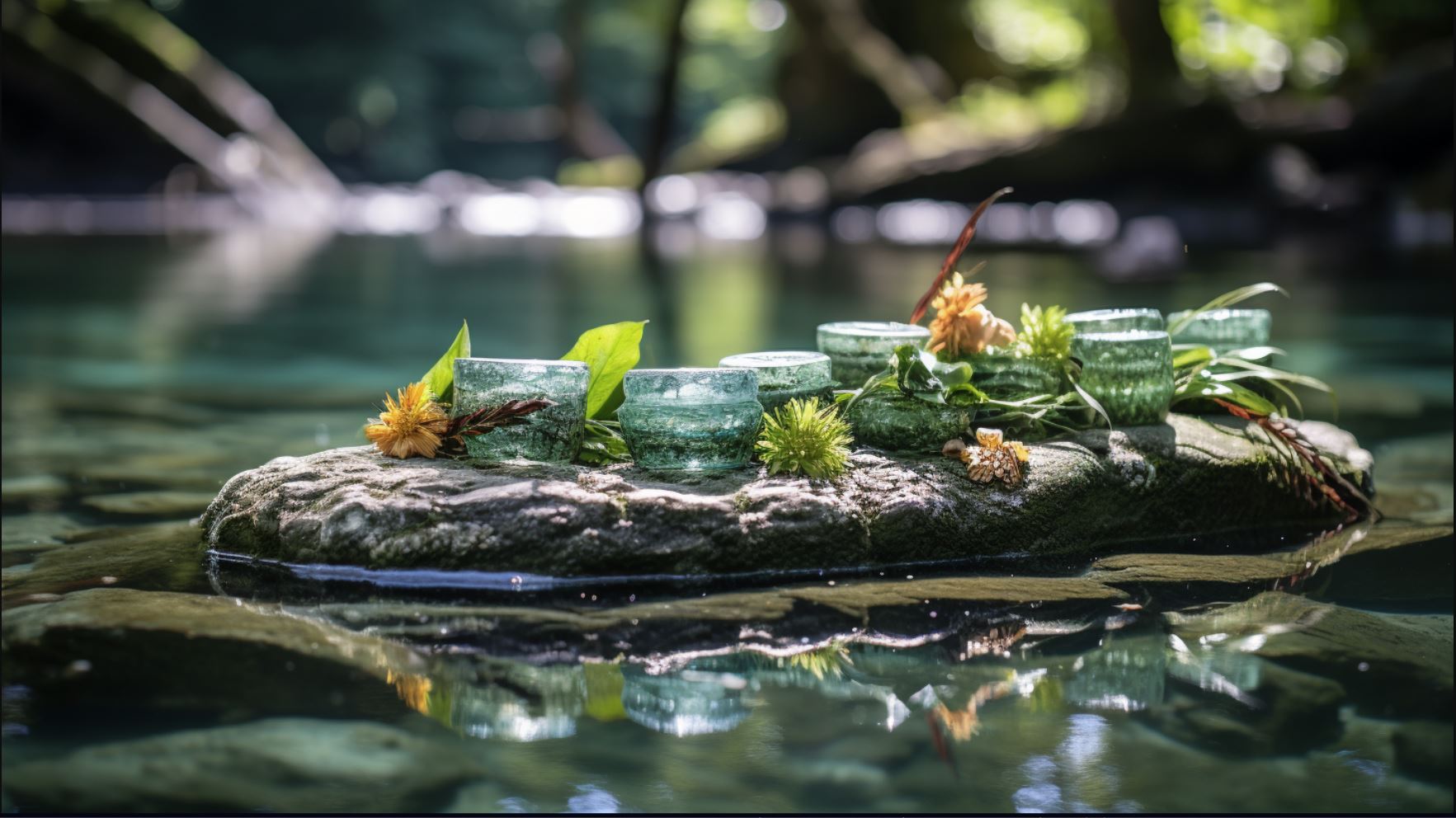Epona Celtic Goddess: Unlocking the Mysteries and Power of Ancient Celtic Divinity
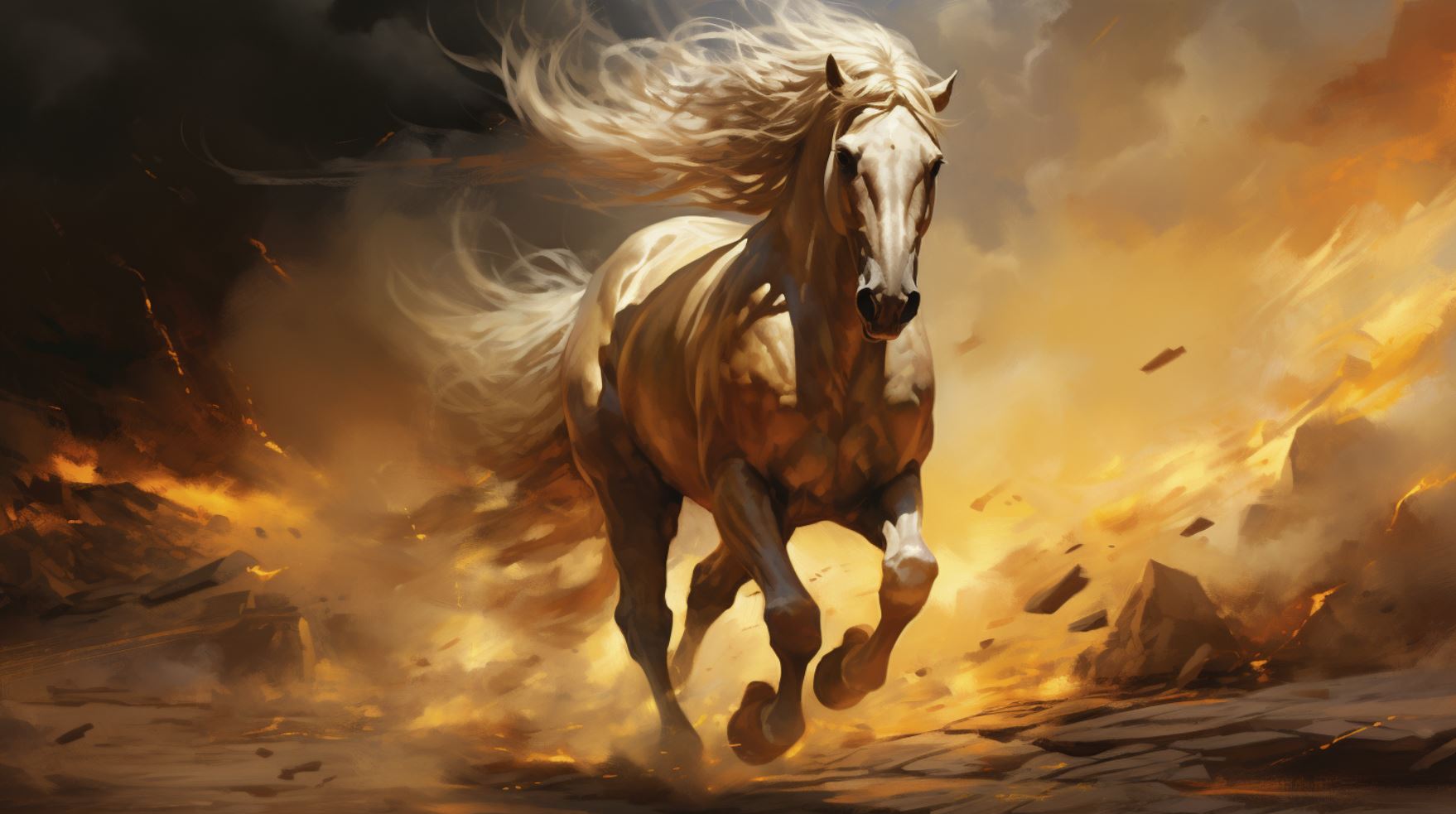
The Celtic Goddess Epona holds a significant place in ancient mythology and culture. With origins deeply rooted in Celtic beliefs, Epona was revered as a symbol of power, fertility, and the divine connection with horses.
Throughout the Roman Empire, her worship and rituals spread, leaving a lasting influence on art, literature, and religious practices. Even today, Epona continues to be revered in modern Paganism and Neopaganism, showing her enduring legacy.
This article explores the rich history, symbolism, worship, and impact of the Epona Celtic Goddess.
The History of Celtic Goddess Epona
The history of the Celtic goddess Epona is a fascinating journey into ancient mythology and cultural significance. Through this exploration, we can uncover the origins of Epona in Celtic mythology, her role in Gaulish culture, and her integration into the Roman Empire.
The Origins of Epona in Celtic Mythology
In Celtic mythology, Epona is believed to have originated as a horse goddess associated with fertility, abundance, and the otherworld. She was revered as a guardian of horses and a protector of the animal kingdom.
Epona embodied the power and grace of these majestic creatures, and her attributes were often depicted through symbols such as horseshoes, bridles, and saddles.
Legend tells that Epona had the ability to shape-shift into different equine forms, granted her deep connection to the horse realm.
This divine shape-shifting ability represented the fluidity between the earthly and spiritual realms, illustrating Epona’s bridging of mortal and divine worlds.
Epona’s Role in Gaulish Culture
Among the Gaulish people, Epona held a prominent place in their culture and daily life. She was widely revered as the patron goddess of horses, as these animals played a vital role in agriculture, transportation, and warfare.
Epona’s association with fertility and abundance also extended to the Gaulish people, who relied on the blessings of the land for survival.
Gallo-Roman artifacts discovered throughout Gaulish territories, such as statues, altars, and inscriptions, offer glimpses into the Gaulish reverence for Epona.
These artifacts depict her adorned with equestrian attire, emphasizing her close connection to horses and highlighting her role as a protector and benefactor of these creatures.
Epona’s Integration into the Roman Empire
With the Roman conquest of Gaul, the worship of Epona underwent a significant transformation.
The Romans recognized the cultural and religious importance of Epona to the Gaulish people and incorporated her into their own pantheon. As a result, Epona became syncretized with Roman deities, particularly the goddess Victoria.
Her integration into the Roman Empire allowed Epona’s cult to flourish throughout the Roman territories, spreading her influence and worship to new regions.
Epona’s veneration extended to diverse communities, including soldiers, traders, and civilians, forming a widespread devotion that transcended social boundaries within the Roman Empire.
This integration also influenced the artistic representation of Epona, as she began to be depicted in Roman-style attire, often accompanied by attributes associated with Roman goddesses.
This blending of Celtic and Roman elements not only marked the union of cultures but also perpetuated Epona’s significance in the expanding Roman Empire.
Symbolism and Attributes of Epona
Epona, the revered Celtic Goddess, embodies a multitude of symbolism and possesses distinctive attributes that depict her role in ancient mythology. Delving into the depths of Epona’s symbolism enables us to unravel the profound meanings behind her presence.
Epona as the Horse Goddess
Epona is widely revered as the Horse Goddess, symbolizing the power, grace, and beauty of these magnificent creatures. Horses hold great significance in Celtic culture, representing strength, fertility, and the ability to traverse different realms.
Epona’s association with horses extends beyond their physical attributes. She embodies their spiritual essence, symbolizing the bond between humans and these majestic animals. Epona is believed to guide and protect horses, ensuring their well-being and aiding in matters related to horsemanship.
Epona’s representation as the Horse Goddess emphasizes the celestial nature of horses and their connection to the divine world. The horse becomes a messenger, carrying prayers, and serving as a conduit between mortals and the Celtic deities.
The Association of Epona with Land and Fertility
Beyond her association with horses, Epona also symbolizes the vital connection between the land and fertility. As a goddess of agriculture and abundance, she ensures the prosperity and fertility of the earth.
Epona’s bond with the land strengthens the cycle of growth and renewal, making her a vital figure in Celtic agricultural practices. Through rituals and offerings, devotees seek her blessings for abundant harvests, fruitful lands, and the overall prosperity of their communities.
Her role in ensuring fertility extends beyond the land to encompass human fertility as well. Epona is often invoked by those seeking assistance in matters related to conception, pregnancy, and childbirth.
The Divine Connection: Epona and Other Celtic Deities
Epona’s significance as a Celtic Goddess transcends her individual attributes. She maintains a deep connection with other Celtic deities, representing the interwoven nature of the divine pantheon.
Often depicted alongside other gods and goddesses, Epona’s presence showcases her role as a bridge between different realms and deities.
Her prominence in Celtic mythology emphasizes the interconnectedness of various divine forces and their collective influence on mortal lives.
Moreover, Epona’s association with specific deities highlights the diverse aspects and domains she governs.
From her connection to the sun god Belenus to her link with the Mother Goddess figure, Epona embodies a range of symbolism that reflects the complexity and richness of Celtic spirituality.
As we explore the symbolism and attributes of Epona, we gain a deeper understanding of her multifaceted nature and her enduring legacy in Celtic mythology. From her role as the Horse Goddess to her association with land and fertility, Epona’s symbolism permeates throughout Celtic culture, leaving an indelible mark on ancient and modern worship practices.
Worship and Rituals Associated with Epona
The worship of Epona in Celtic culture involved various rituals and practices that honored her divine presence and sought her blessings. The rituals were an integral part of connecting with her power and seeking her guidance in different aspects of life.
Epona’s Cult and Worship Practices
Epona’s cult had dedicated sanctuaries and temples where her followers gathered to offer their devotion and seek her favor. These sacred spaces were adorned with statues and images of Epona, often accompanied by horses or depicted riding a horse, emphasizing her association with equine divinity.
The devotees engaged in prayers, hymns, and offerings to express their reverence and connect with the goddess.
The worship practices included ceremonial baths, purification rituals, and processions, where the devotees would march with images or representations of Epona.
These processions were seen as a way to honor her and seek her protection and blessings for specific events or endeavors.
Offerings and Votive Objects Dedicated to Epona
Devotees of Epona would make offerings as a gesture of gratitude and to establish a reciprocal relationship with the goddess. These offerings ranged from simple tokens of respect such as flowers, herbs, or fruits to more elaborate offerings like jewelry or precious metals.
They believed that by giving these gifts, they would gain Epona’s favor and receive her blessings in return.
Votive objects played a significant role in Epona’s worship. These objects, often small statues or sculptures, were offered to Epona as acts of devotion and requests for her assistance in specific aspects of life.
Epona’s association with horses meant that votive objects related to horses, such as horseshoes or small figurines, were commonly given as offerings.
The Significance of Mares and Foals in Epona’s Worship
One prominent aspect of Epona’s worship was the veneration of mares and foals.
Horses held a sacred status in Celtic culture and were closely associated with the goddess. Mares and foals were believed to embody Epona’s divine essence, representing fertility, abundance, and protection.
In rituals dedicated to Epona, mares and their young offspring were adorned with ribbons, flowers, or other decorative elements.
The devotees would lead these adorned horses in processions or participate in ceremonial horse races as acts of devotion and to honor Epona’s connection with equine energy.
The mares and their foals were considered sacred beings, believed to carry the blessings and protection of Epona.
They served as a symbol of the goddess’s power in bringing forth new life and nurturing abundance in nature.
In conclusion, worshiping Epona involved various rituals, practices, and offerings that aimed to establish a spiritual connection with the goddess and seek her blessings.
The cult of Epona celebrated her role as a horse goddess, while also emphasizing her association with land, fertility, and divine interconnections. The veneration of mares and foals demonstrated the importance of horses in Celtic society and their symbolic representation of Epona’s power and influence.
Epona and Her Influence in the Roman Empire
Epona’s influence extended far and wide across the expansive Roman Empire, with her presence felt particularly in the Danubian provinces. As the empire expanded its territories, Epona’s cult spread, reaching regions such as present-day France, Belgium, Germany, and Hungary.
She became a beloved deity among the diverse populations of these provinces, and her worship often melded with local beliefs. Let us explore the significance of Epona’s presence in the Roman Empire, from her widespread worship to her lasting impact on art and literature.
Epona Across the Roman Empire’s Danubian Provinces
The Danubian provinces played a crucial role in the propagation of Epona’s cult. Her presence in regions like Noricum, Pannonia, and Moesia transformed her into a central figure in the religious practices of these communities.
The Romans, recognizing the popularity of Epona, seamlessly incorporated her into their pantheon, further solidifying her position as divine protector of fertility, horses, and the land. With temples dedicated to her and numerous representations in art, Epona became a prominent deity, undoubtedly leaving an indelible mark.
Roman Adaptations of Epona’s Cult
As the Romans encountered and assimilated different cultures, they adapted Epona’s worship to align with their religious practices. While she retained her essential attributes as a horse and fertility goddess, Roman influences shaped her depiction in various ways.
Epona became associated with cavalry and the military, often depicted as a protector of the Roman Empire. This adaptation allowed for a seamless integration of her cult into the polytheistic tapestry of the Romans, serving both spiritual and practical purposes.
Epona’s Legacy in Roman Art and Literature
Epona’s influence extended beyond religious practices and permeated Roman art and literature. Her image appeared on coins, sculptures, and decorative objects, reaffirming her prominence in Roman society. These representations showcased her as a divine figure with a nurturing and protective presence.
Additionally, Epona’s mythology and symbolism inspired poets and writers, who incorporated her into their works. Her role in Roman art and literature solidified her legacy, ensuring her enduring presence throughout the empire’s history.
The Continued Reverence for Epona
Epona, the Celtic goddess, continues to be deeply revered in modern Paganism and Neopaganism. Her ancient presence and symbolism have resonated with many spiritual seekers, inspiring a revival of her worship and devotion.
In this section, we explore the profound influence Epona has had on these contemporary spiritual practices.
Epona’s Influence on Modern Paganism and Neopaganism
Epona holds a prominent place within modern Pagan and Neopagan belief systems. Her depiction as a horse goddess and her association with fertility and prosperity have captivated the imaginations of individuals seeking a connection with nature and ancient traditions.
Worshippers and practitioners often invoke Epona’s energy and guidance in rituals and ceremonies. They honor her through offerings of fresh fruits, vegetables, and flowers, paying homage to her association with abundance and growth.
Devotees also draw upon her strength and protective qualities, seeking her aid for safe travels, healing, and the well-being of their animal companions.
Epona and Rhiannon: A Comparative Analysis
In the realm of Celtic goddesses, Epona is often compared to Rhiannon, another prominent figure in Welsh mythology. Both goddesses share similarities in their association with horses and their roles as fertility deities.
However, they also possess distinct qualities and attributes that set them apart.
While Epona is primarily linked with the prosperity and abundance of land, Rhiannon embodies the transformative and magical qualities of the horse.
Their comparative analysis sheds light on the diverse facets of Celtic mythology and showcases the multi-faceted nature of equine divinity in different Celtic traditions.
Epona in Contemporary Art and Popular Culture
Epona’s timeless allure has transcended ancient myths and found a place in contemporary art and popular culture.
Artists, writers, and musicians often draw inspiration from Epona’s symbolism and incorporate her into their creative works.
Her portrayal in visual arts captures the grace and majesty of the horse, while literary works explore her complex mythology and the themes of femininity, freedom, and strength she represents.
Additionally, Epona’s presence can be found in various forms of entertainment, including fantasy literature, role-playing games, and even fashion.
As we navigate the modern world, the continued reverence for Epona reminds us of the enduring power of ancient goddesses and their ability to inspire and guide us in our spiritual journeys.
- Epona’s influence on modern Paganism and Neopaganism
- Comparative analysis between Epona and Rhiannon
- Epona’s presence in contemporary art and popular culture
.











